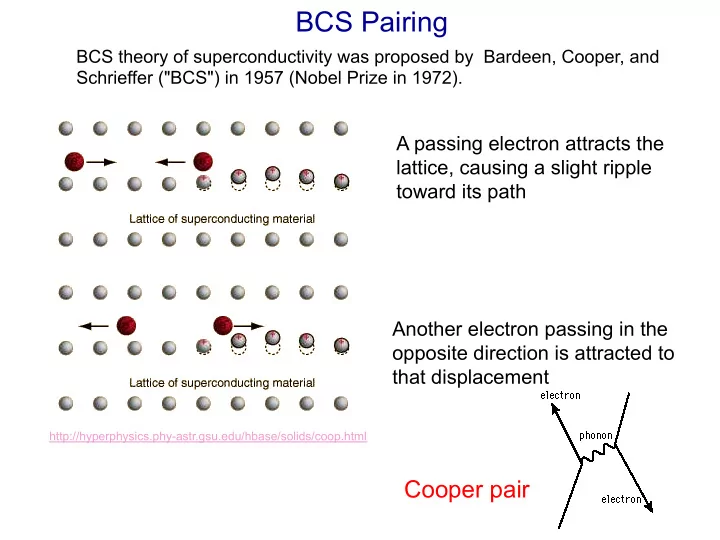

BCS Pairing BCS theory of superconductivity was proposed by Bardeen, Cooper, and Schrieffer ("BCS") in 1957 (Nobel Prize in 1972). A passing electron attracts the lattice, causing a slight ripple toward its path Another electron passing in the opposite direction is attracted to that displacement http://hyperphysics.phy-astr.gsu.edu/hbase/solids/coop.html Cooper pair
Energies of first excited states: even-even vs. odd-A nuclei Bohr, Mottelson, Pines 1958 Energy gap
Ground-state nuclear moments of inertia Reduction of moment of inertia due to BCS pairing. Migdal (59) rigid well reproduced by cranked HFB calculations irrotational Nuclear moments of inertia at T =0 lie between the superfluid and normal limits
Low-density regime of neutron EOS Dilute fermion matter: • strongly correlated (pairing) • very large scattering length (unitary limit) • Low-density neutron matter • Cold fermions in traps Gezerlis and Carlson, Phys. Rev. C 77, 032801(R) (2008) • Connections to nucleonic pairing in nuclei and neutron stars • Connections to color superconductivity in quark matter
Recommend
More recommend